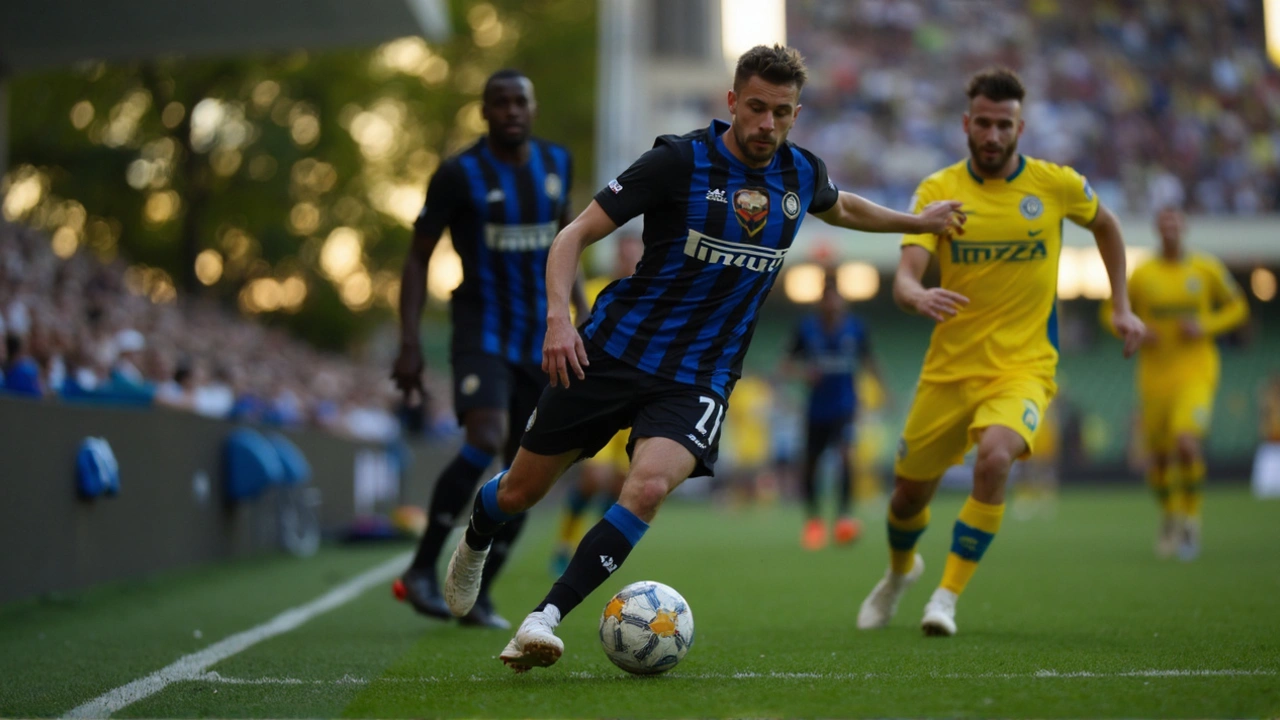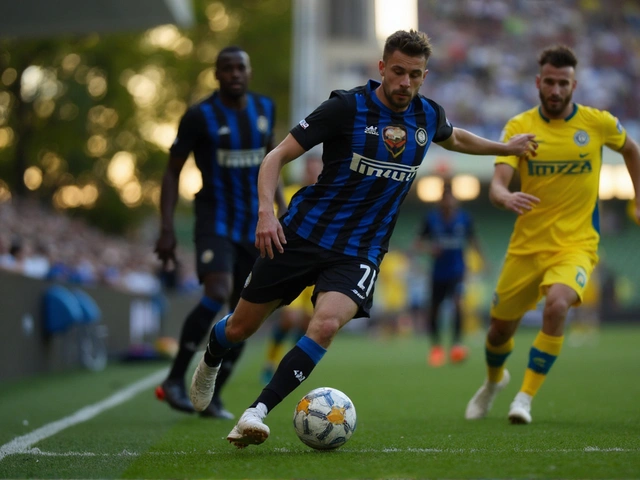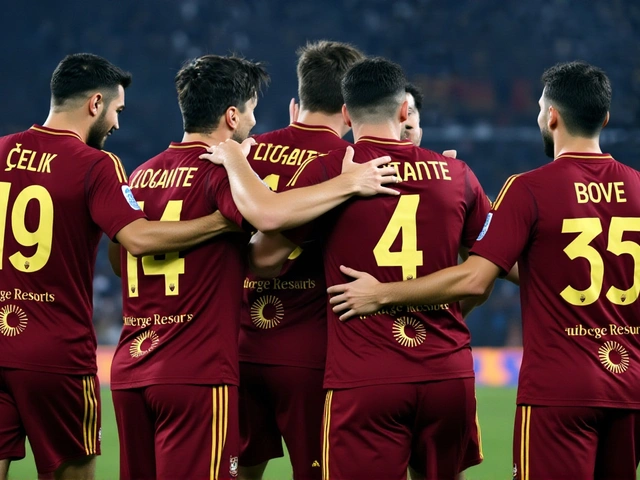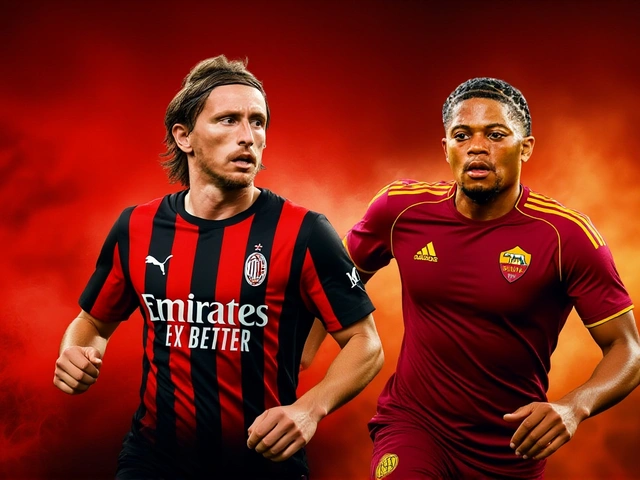Inter Milan's Injury List Gets an Update
The start of the Serie A season rarely runs smoothly, and this year Inter Milan hasn’t been immune to problems. Just days after kicking off their campaign, the team’s medical room has been buzzing. Among the names on the treatment table: Inter Milan’s new signing Piotr Zielinski and rock-solid defender Stefan de Vrij. Both players sat out the season opener against Genoa with thigh strains that cropped up during preseason.
Fast forward to August 19 and there’s a hint of relief for the club. Zielinski, who only recently swapped the blue of Napoli for the Nerazzurri, and de Vrij, a seasoned pro from Lazio days, were seen jogging and doing fitness work at Suning Training Centre. They weren’t cleared to join full squad activities just yet, but their presence on the grass signals progress.
Team Solutions and Selection Puzzles
Simone Inzaghi has hardly had time to experiment with his best eleven. Tajon Buchanan’s broken leg, suffered during a friendly, has forced the manager’s hand in the wingback role, stretching the squad's defensive reserves. Inzaghi leaned on backups for the Genoa fixture, but he’s counting the days until both de Vrij and Zielinski can boost his options at the back and in midfield.
Both players’ injuries have been under the microscope. Thigh strains can be tricky; rush things and relapse is almost guaranteed. Inter’s medical staff have kept Zielinski and de Vrij on tailored programs—think pitch running, flexibility work, controlled ball drills—all calculated to build up strength without risking setbacks. The club wants both back in time for the next test against Lecce, but a return to team sessions needs to happen smoothly, no gambles allowed.
Meanwhile, the squad has been adapting. New midfield signings have had a chance to show their stuff, and younger defenders have filled in alongside the ever-reliable Alessandro Bastoni. The focus now shifts to ensuring the full squad is firing and that Inzaghi isn’t forced into uncomfortable tactical acrobatics just to plug gaps on the team sheet.
If Zielinski and de Vrij can pass fitness checks before the Lecce match, expect them in the match-day squad. For fans and coaches alike, their potential comeback can’t come soon enough: Inter needs its experienced core, especially with key fixtures stacking up on the horizon.





Comments
Inter's medical staff seem to be treating thigh strains like a weekend jog. While the club touts a "tailored program", the data shows a 30% relapse rate for rushed returns. They should let Zielinski and De Vrij complete a full mesocycle before tossing them into a Serie A clash.
Hey everyone, let's keep the optimism in check but realistic. Injuries are part of the game, and Inter's medical team is doing a solid job with low‑impact drills. If Zielinski and De Vrij stick to the plan, they'll be match‑fit for Lecce without risking a setback.
Italy’s football heritage deserves players at full strength! 🙌 Let’s hope the club stops babysitting and gets these key Italians back on the pitch, because the Nerazzurri are counting on homegrown talent to dominate. 🇮🇹
Injuries happen we wait.
Yo guys!!! The physio crew is running drills like crazy!!! They’re using hydro‑therapy, proprioceptive work, and controlled ball drills!!! If they keep this up Zielinski and De Vrij will be back faster than you think!!!
Wow-what a roller‑coaster! The sight of them jogging already feels like a sunrise after a storm. Inter’s squad depth is being tested, but the drama of watching young backs step up adds flavor to the season. Let’s see the phoenix rise!
In the context of contemporary elite football, the management of musculoskeletal injuries necessitates a multidisciplinary approach anchored in evidence‑based protocols. The thigh strains suffered by both Piotr Zielinski and Stefan de Vrij constitute a classic example of overuse pathology following intensive preseason conditioning. Scholarly literature indicates that a graduated return‑to‑play regimen, incorporating low‑intensity aerobic activity, progressive neuromuscular training, and sport‑specific agility drills, optimally mitigates the risk of re‑injury. Inter Milan's medical staff appear to have adopted such a framework, as evidenced by the reported jogging sessions at the Suning Training Centre. Nonetheless, the temporal proximity to the Lecce fixture imposes a constrained window for physiological adaptation. While some analysts advocate for a conservative timetable extending beyond two weeks, others argue that a targeted re‑conditioning program can safely expedite readiness. It is imperative to acknowledge the heterogeneity of individual healing trajectories, which are influenced by age, previous injury history, and intrinsic tissue quality. Moreover, the psychosocial dimension, encompassing player confidence and perceived pressure, plays a non‑trivial role in functional recovery. Given Zielinski's recent transfer from Napoli and De Vrij's extensive experience at Lazio, both athletes possess a professional acumen that may facilitate adherence to prescribed protocols. The coaching staff, led by Simone Inzaghi, must balance tactical exigencies with the paramount objective of long‑term player welfare. A premature reintegration could precipitate a cascade of setbacks, thereby compromising squad stability for subsequent fixtures. Conversely, an overly cautious approach might deprive the team of crucial creative and defensive contributions at a pivotal juncture of the campaign. Accordingly, a nuanced decision, informed by objective functional testing and subjective player feedback, constitutes the most prudent path forward. In summation, the intersection of medical rigor, strategic foresight, and player agency will ultimately determine the successful reintegration of Zielinski and De Vrij into the match‑day roster.
Stay positive, folks! A strong recovery will boost the squad morale and give Inzaghi the flexibility he needs for upcoming battles. Confidence in the process is key.
From a tactical standpoint, having a deep‑lying playmaker like Zielinski and a ball‑playing centre‑back like De Vrij adds balance. Their gradual reintroduction should align with the team's possession rhythm.
Yo! Can't wait 2 see them back in action, those guys are like superstars in my heart
The training vids were legit vibey, hope they dont get hurt again lol
Honestly, Inter's hype machine is blowing smoke. They parade these “tailored programs” while the guys are barely moving. It’s a classic case of marketing over substance.
The phenomenology of recovery underscores the interplay between biomechanical restitution and cognitive reengagement. In concise terms, both players need time.
Ugh, another injury update... 😒 it's getting old. 🙄
Good vibes all around 😊👍
When we examine the cultural significance of football in Milan, it becomes evident that player availability transcends mere tactical considerations; it intertwines with the collective identity of a city that lives and breathes the sport. The absence of Piotr Zielinski and Stefan de Vrij, therefore, resonates beyond the training ground, echoing through the streets where fans gather to discuss every pass and tackle. From a philosophical perspective, injury can be interpreted as a reminder of the fragility inherent in even the most polished athletic performances. Yet, this fragility also offers an opportunity for reflection on resilience, both personal and communal. In practice, the medical team’s approach-incorporating progressive overload, proprioceptive drills, and sport‑specific simulations-mirrors the broader societal desire for measured recovery rather than sensational haste. Historically, clubs that have honored this balance have often emerged stronger, as the return of a player after a well‑managed rehabilitation can catalyze a surge of morale. Moreover, the tactical flexibility afforded by Visionary midfielders like Zielinski, who can dictate tempo, and by ball‑playing defenders such as De Vrij, who can initiate attacks from the back, is indispensable in the modern high‑pressing game. Consequently, the strategic patience exhibited by Inzaghi aligns with a long‑term vision that values sustained success over fleeting triumphs. It is this very patience that resonates with the cultural narratives of perseverance that Milanese supporters hold dear. Ultimately, the convergence of medical prudence, tactical necessity, and cultural expectation will shape the narrative of Inter’s upcoming season.
As an aficionado of elite football, I must underscore that the club’s hierarchy should prioritize quality over quantity. The impression that we must field all stars instantly is a pretentious notion. Patience will preserve the integrity of the squad.
Inter’s approach blends traditional physiotherapy with modern load‑monitoring technology. This hybrid method should, in theory, expedite a safe return while preserving performance metrics.
Keep the faith the guys are on the right track they’ll be fine
There’s a hidden agenda behind every “tailored program”. The club feeds us narratives while corporate sponsors pull strings. Don’t be fooled by the glossy press releases.
Looking at the injury data, the incidence of thigh strains correlates with rapid acceleration drills in preseason. A mitigation strategy would involve periodized high‑intensity intervals combined with eccentric strengthening protocols.